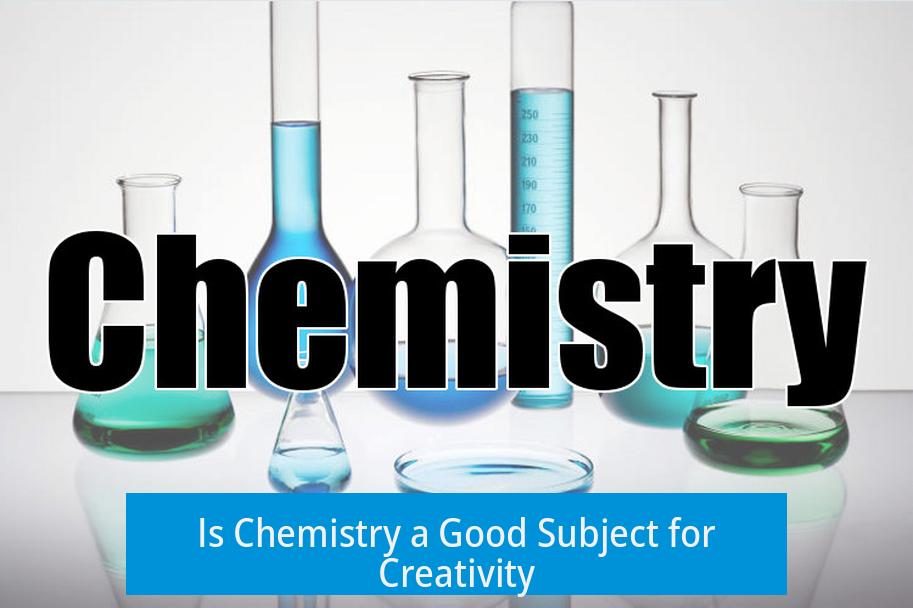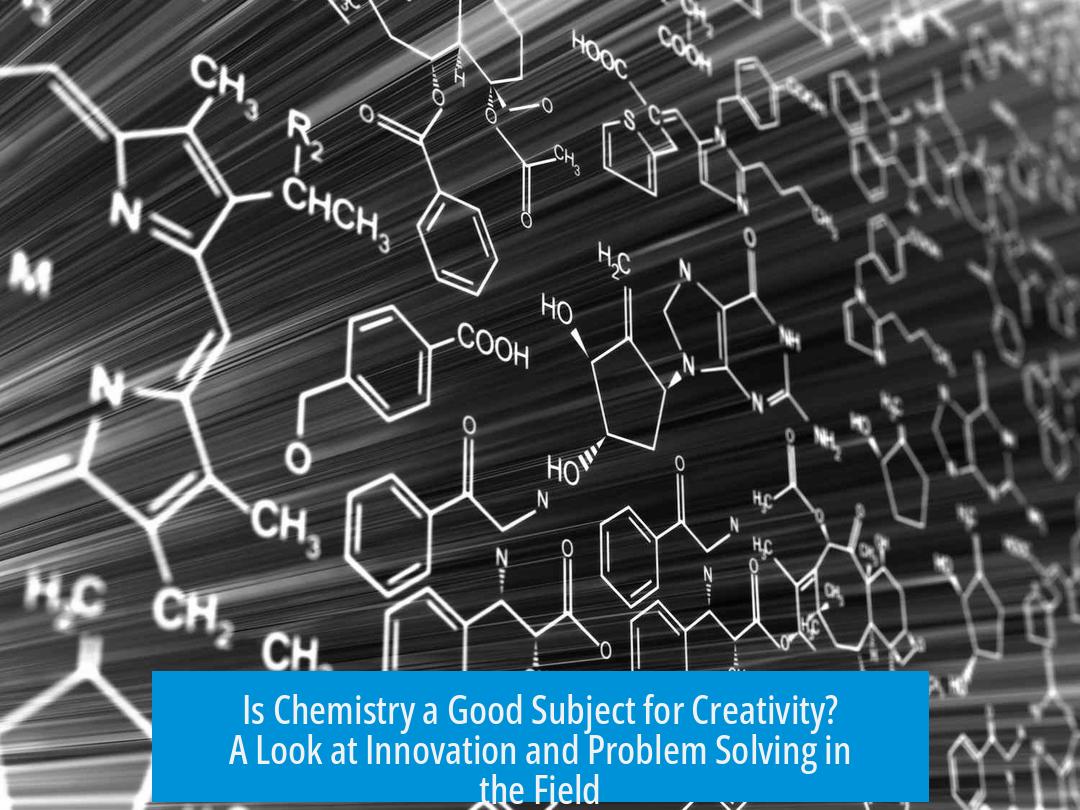Is Chemistry a Good Subject for Creativity?

Chemistry is a good subject for creativity. The field often involves designing new molecules, solving unique problems, and combining knowledge from different disciplines. Creativity stands at the core of many chemical areas, especially in organic synthesis, medicinal chemistry, and materials science.
Understanding Creativity in Chemistry
Creativity in chemistry goes beyond just artistic expression. It means inventing new methods, developing compounds, or finding innovative solutions. Success in chemistry demands an imaginative approach to practical and theoretical challenges.
- Designing new molecules or materials
- Developing synthetic pathways
- Innovative problem solving and troubleshooting
These tasks represent creativity rooted in logic and experimentation, showing how chemistry blends art with science.
Creative Fields Within Chemistry
Several branches of chemistry emphasize creativity more than others:
- Organic Synthesis – Chemists invent and assemble complex molecules by planning sequences of reactions. It’s a creative exercise in strategy and technique.
- Materials Chemistry – Developing new materials with specific properties requires imagination and experimentation.
- Medicinal Chemistry – Finding potential drugs involves creative molecular design and modifying structures to improve efficacy.
Each area demands innovative thinking to progress and meet scientific or industrial goals.
Creativity as Problem Solving
In many chemistry roles, creativity is practical problem solving. For example:
- Reworking experimental steps when reactions fail
- Applying theory to troubleshoot unexpected results
- Optimizing procedures using available resources
This form of creativity is essential to laboratory success but may differ from traditional artistic creativity.
Teaching Chemistry and Communication
Teaching chemistry requires creativity in how information is communicated. Educators continuously develop new methods to engage students and clarify complex concepts.
This role allows for creative freedom in presentation styles, experiments, and learning tools, contributing to student success.
Creative Outlets in Chemistry Careers
Some chemistry-related jobs explicitly focus on creativity:
- Formulation Chemistry – Cosmetic and product development requires inventing novel formulations.
- Research and Development – New chemical processes and compounds are designed regularly.
These positions often feature active creativity during product design and innovation phases.
Limitations on Creativity
Despite creative potential, chemistry has constraints:
| Limitation | Description |
|---|---|
| Public Appreciation | Chemical achievements rarely translate into popular recognition, limiting external validation. |
| Job Roles | Many chemistry jobs focus on routine analysis with little room for innovation. |
| Procedural Rigor | Strict lab protocols limit personal choices, restricting creative freedom. |
| Self-Expression | Chemistry fosters problem-solving creativity over personal artistic expression. |
Readers must understand these nuances when assessing chemistry’s creative nature.
Subjectivity in Creativity Perception
How creative chemistry feels depends on:
- Definition of creativity
- Individual role and responsibilities
- Personal engagement with the subject
While some researchers do not feel highly creative, students often perceive research work as a deeply creative pursuit.
Career Implications
Creativity in chemistry careers varies greatly by specialization:
- Some paths offer substantial creative freedom
- Others, particularly routine analysis roles, limit creativity
- Job availability and salary vary, affecting career sustainability
Potential chemists should weigh creative satisfaction alongside financial and job-market factors.
Examples of Creative Achievements in Chemistry
- Developing a six-step method to measure tin-121m in fission products
- Creating a non-carcinogenic substrate for fluorescent assay of cytochrome P450
- Producing chloride samples from lake water with low sulfur-36 contamination
Such advancements highlight targeted innovation critical within the field, even if they lack broad public recognition.
Key Takeaways
- Chemistry involves significant creativity, especially in synthesis, materials, and medicinal chemistry.
- Creative work often focuses on problem solving, design, and interdisciplinary approaches.
- Teaching chemistry also requires creative communication methods.
- Many chemistry jobs have limited creative scope due to strict procedures or routine tasks.
- Public recognition for chemical creativity tends to be low despite complex innovations.
- Perception of creativity varies by individual role and definitions of creativity.
- Chemistry career paths differ in creative opportunities and job market realities.





Leave a Comment